360-degree panoramic content is becoming more popular and accessible every day. Many years ago, to realize this effect of presence, specialized equipment and software were required that stitched photographs into a single VR scene. It was interesting to travel along the streets of distant cities in different countries of the world using Google maps in panorama mode. Over time, portable devices for taking photos and videos with a 360-degree view have appeared, and now there are already many product lines of such cameras for both personal - home use, and corporate - professional use.
These VR cameras are equipped with two opposite lenses with a viewing angle of just over 180 degrees. Then both hemispheres are programmatically combined into a single 360-degree scene, using algorithms for seamless gluing of borders, and compensation of poles (the camera itself is cut out if it is on a tripod, for example).
With the support of YouTube for this video viewing format, the popularity of VR content has grown even more. In the browser version, you can change the position of the panorama with the mouse. In mobile devices with a gyroscope, this happens automatically when the position of the device itself changes. And in VR glasses, the maximum effect of presence is provided due to the panorama view by turning the head.
If for personal purposes such content is used in most cases as entertainment: travel, skydiving, sports stunts, etc., then business tasks have a completely different vector.
VR presentation has become an indispensable tool in such areas as:
- The property. No photo or video recording will allow you to remotely present any real estate object from the inside, as a 360-degree tour will do. No need to pause video recording or endlessly scrolling through the photo in search of the desired fragment - we put on glasses and consider all the details in the usual format.
- . VR- , . . , , , .
- . 3D- , VR . — .
For amateur photography, Ricoh's VR camera line includes many different models (from left to right): Theta m15, Theta S, Theta SC, Theta SC2 and the top model Theta V. The Ricoh professional camera Theta Z1 (far right) differs from amateur models not only in design and the price.

Ricoh Theta Z1 specifications from official sources
 Realistic panoramic photos in a resolution of 6720 x 3360 (almost 7K) with high-precision image stitching
Realistic panoramic photos in a resolution of 6720 x 3360 (almost 7K) with high-precision image stitching
 Two inch CMOS sensors ensure high quality of details even at night and in low-light rooms
Two inch CMOS sensors ensure high quality of details even at night and in low-light rooms
 The use of a new high-tech lens avoids glare and optical distortion
The use of a new high-tech lens avoids glare and optical distortion
 Diverse modes for realizing different scripts. Setting basic shooting priorities.
Diverse modes for realizing different scripts. Setting basic shooting priorities.
 Realistic, immersive spherical video recording in 4K (3840 x 1920, 29.97 fps)
Realistic, immersive spherical video recording in 4K (3840 x 1920, 29.97 fps)
 For the first time in the THETA series, it can be saved in RAW (DNG) (Simultaneous with JPEG).
For the first time in the THETA series, it can be saved in RAW (DNG) (Simultaneous with JPEG).
 Supports superb real-time 4K panoramic video with 360 ° view.
Supports superb real-time 4K panoramic video with 360 ° view.
 The camera has 4 built-in microphones for independent recording of sound from 4 different directions during video recording.
The camera has 4 built-in microphones for independent recording of sound from 4 different directions during video recording.
 The camera body is made of magnesium alloy, which provides high strength and reliability during operation.
The camera body is made of magnesium alloy, which provides high strength and reliability during operation.
 The camera is compact and thin, despite full-size sensors and unprecedented performance.
The camera is compact and thin, despite full-size sensors and unprecedented performance.
 The Theta Z1 is equipped with an informative display showing memory status, shooting mode and battery level.
The Theta Z1 is equipped with an informative display showing memory status, shooting mode and battery level.
 The free RICOH THETA Stitcher app is a plug-in for stitching RAW images in Adobe Photoshop Lightroom Classic CC.
The free RICOH THETA Stitcher app is a plug-in for stitching RAW images in Adobe Photoshop Lightroom Classic CC.
Real use experience
I got the camera for tests from the representatives of Ricoh Russia . This was the period of the first days of self-isolation, and I was eager to make a series of 360-degree views of Moscow streets.
The first days I used the camera exclusively for video, without really learning the functionality. I installed the application on my phone, connected to the camera and started shooting. I found out that initially the recording is not formed in a panoramic format, but two hemispheres are saved in a 4K video.
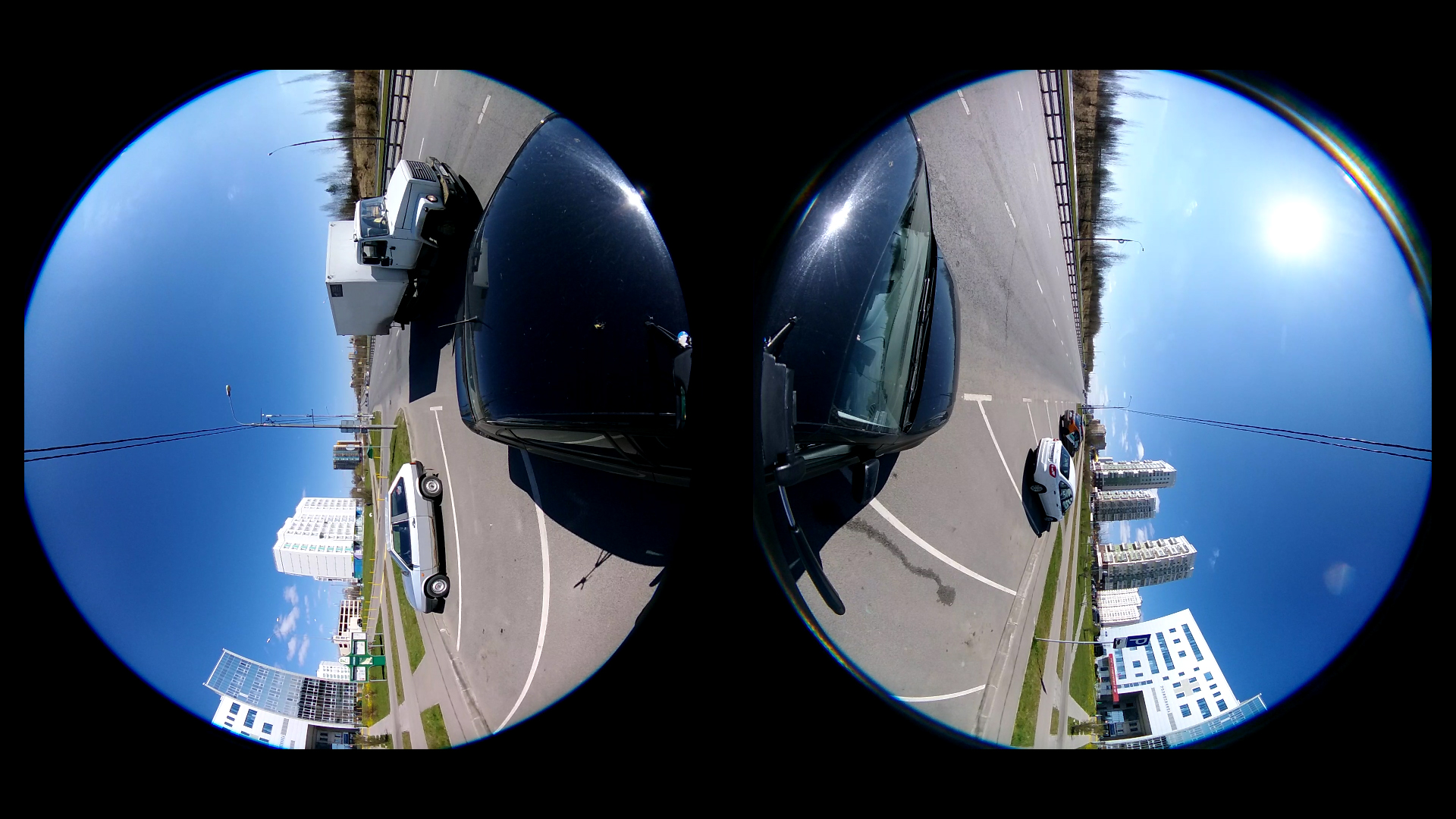
But the magic of stitching two circles into a spherical panorama itself is the merit of software algorithms. After gluing the video, when viewed in normal mode, it looks like this:
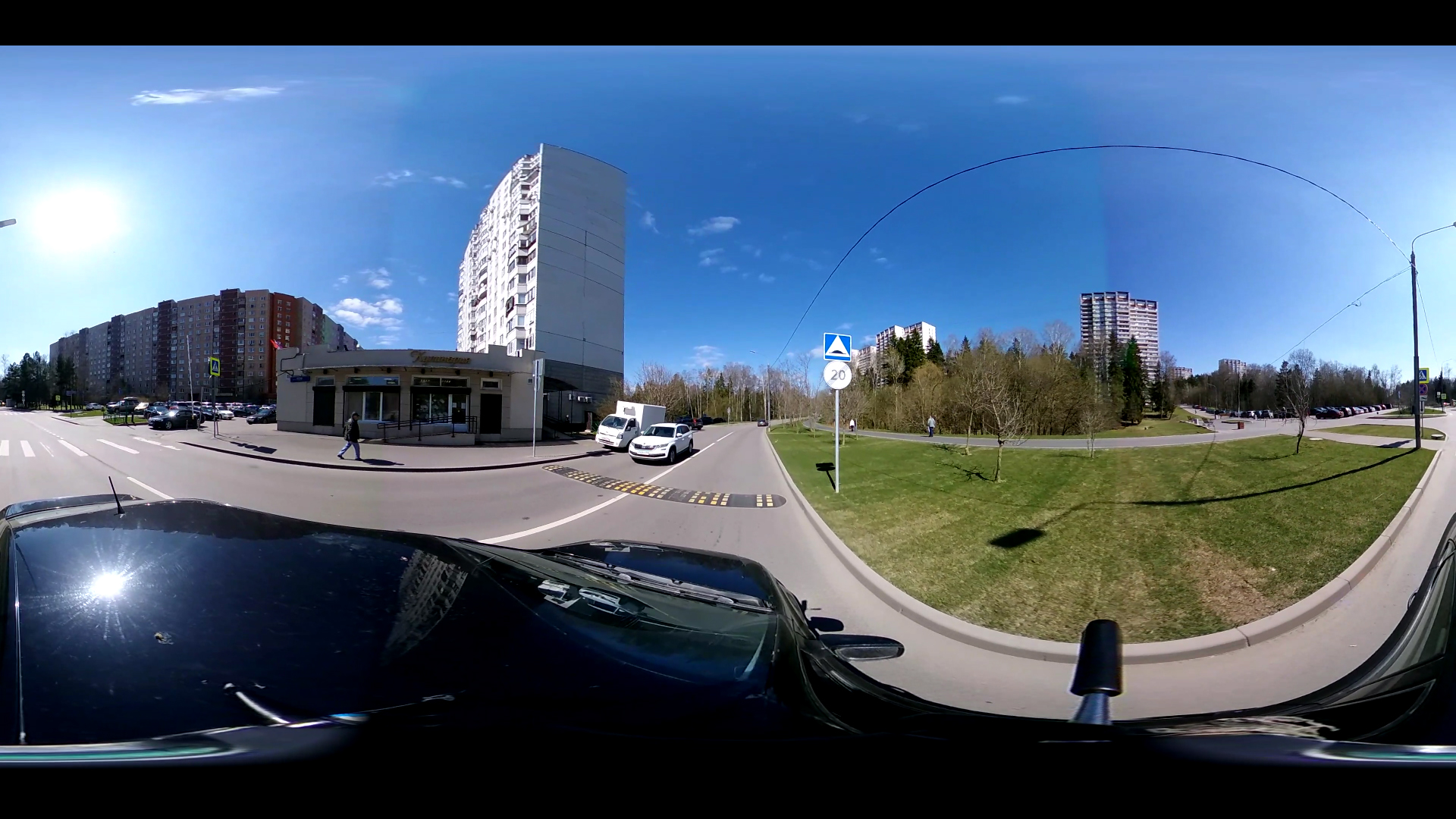
I had 2 ways to prepare a 360 video: an app on my phone and a separate program on a PC. I converted the first videos right on my phone. The process was very long, as the computing power of the phone was not enough for fast processing of a 4K stream. Then, I tried to make the process of gluing the source into a sphere on a powerful PC. In addition to the fact that the processing speed was several times higher than that on an iPhone, the gluing quality became much better than on a smartphone. I regretted that I had deleted the sources of the first videos, and I did the further processing of the 3D video exclusively on my computer.
This is how the seam between the two hemispheres captured by the front and rear lenses looks like when processed on a smartphone:
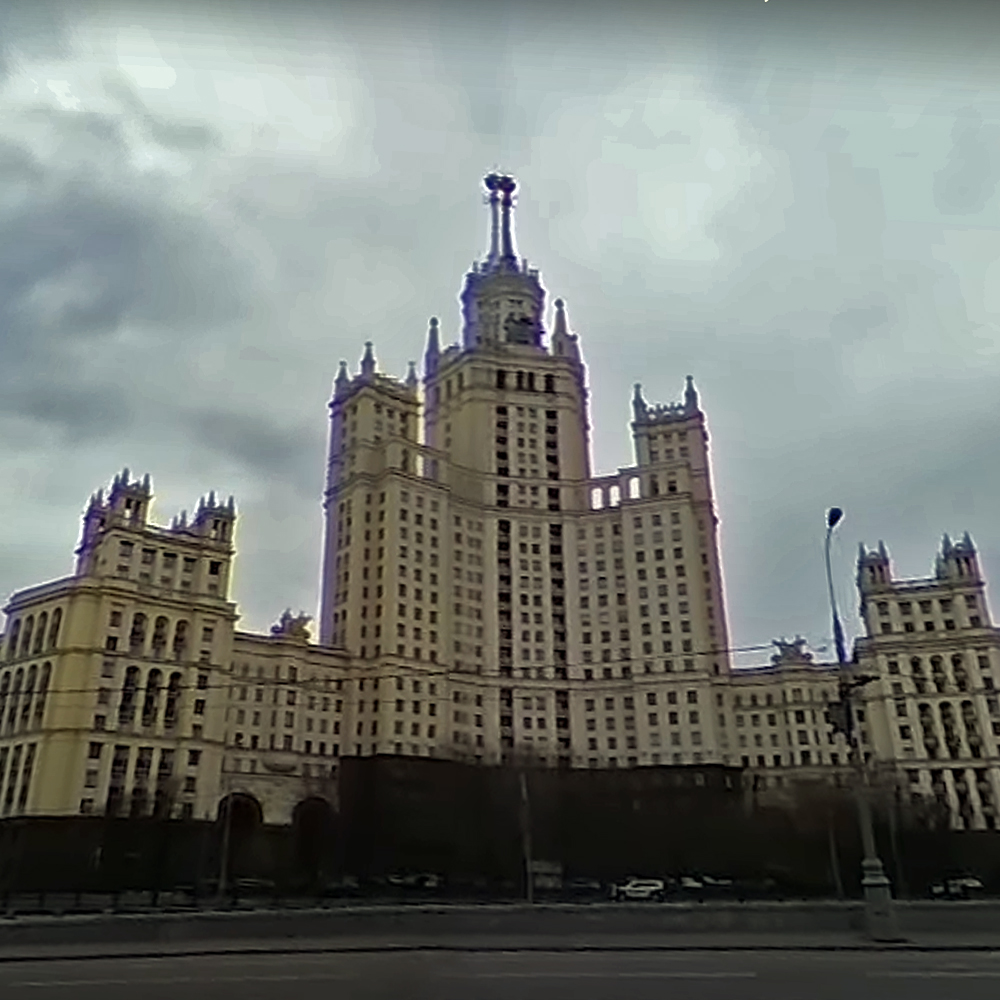
As a result, the content is clearly duplicated in the place of gluing, the seam is blurred and clearly expressed. This quality can only suit the case when you need to quickly upload content to youtube directly from your phone or make a live broadcast.
The result of processing with a PC program is much better. The location of the camera installation, after software processing, looks like this:
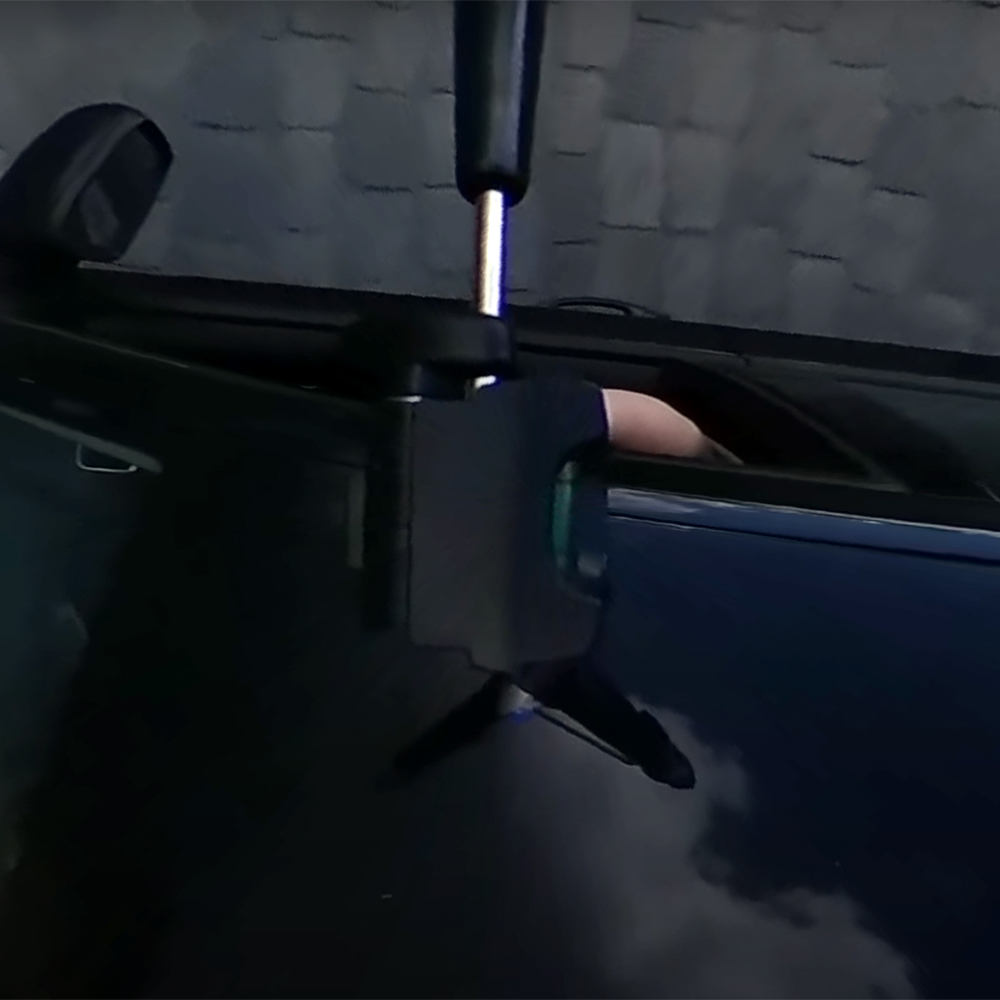
That is, the camera is completely cut out without compromising the integrity of the panorama.
Right side:
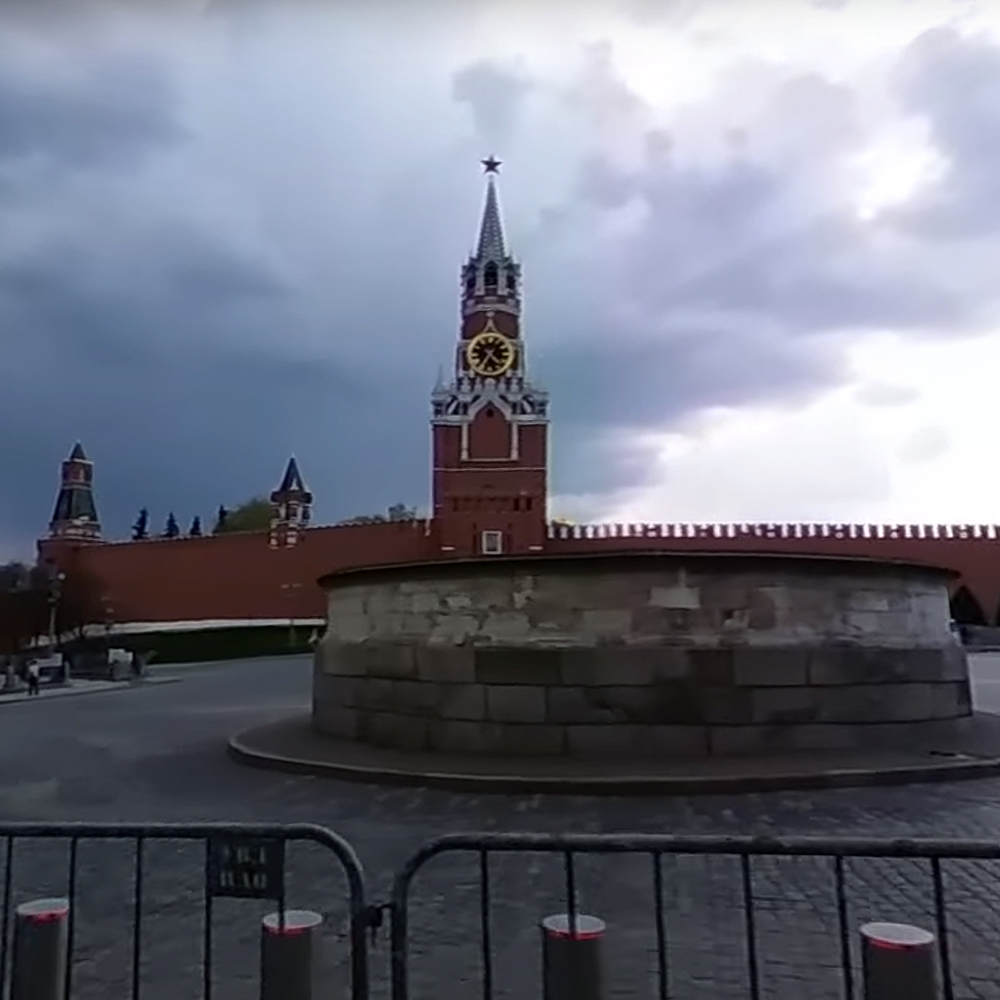
Left side: The
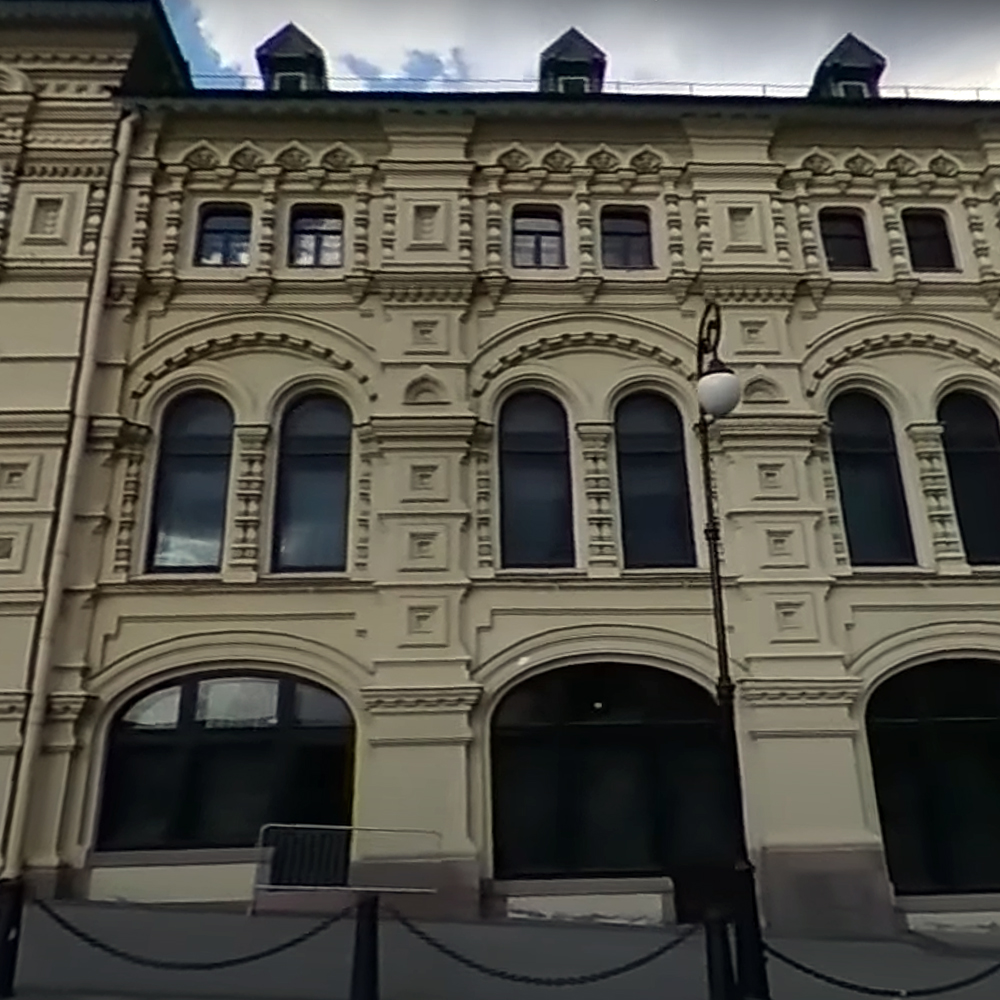
seam is not visible in principle - the gluing is perfect. But this is not always the case. For example, in sunny weather, when the exposure of the first lens differs from the second, you can see the stitching border:
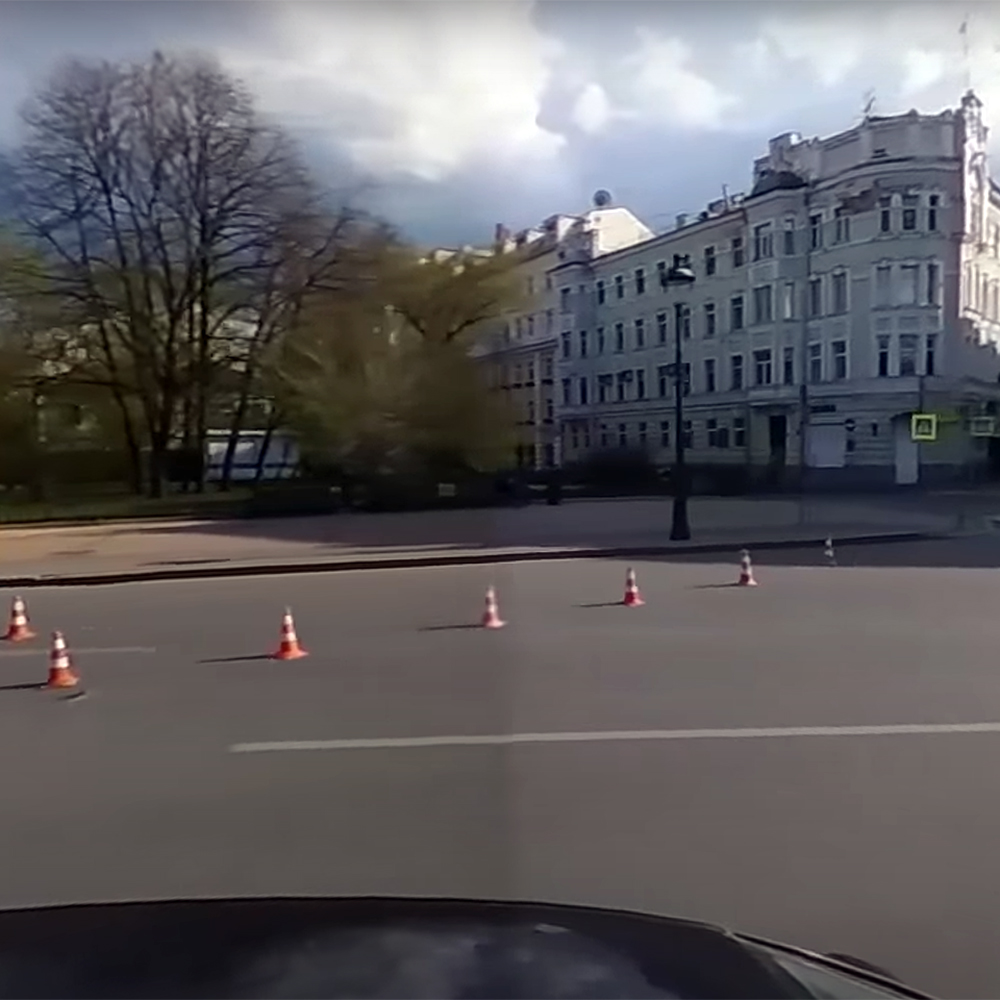
With the RICOH Theta Z1 camera I shot several dozen spherical videos that reflected the unique footage of empty Moscow.
Some videos from the streets of Moscow during self-isolation with a 360-degree view
Full playlist Quarantine 2020
But, in the process of filming, I looked at a number of reviews of the ROCOH Theta line of cameras and realized that I was using the Z1 model not for its intended purpose. The Z1 model shoots spherical videos at the level of the V model, which is almost 2 times cheaper than a professional camera. And the unique difference between the RICOH Theta Z1 camera is the quality of photography. With unprecedented quality, resolution and detail, the Z1 takes it to the professional level.
Below I will duplicate the link from the table of contents of the article, where you can see 5 spherical photographs taken by the Theta Z1 camera:
→ Link
If you look closely, each picture has a link to Habr)
Thank you for your attention!
Server and storage information
Video conferencing solutions